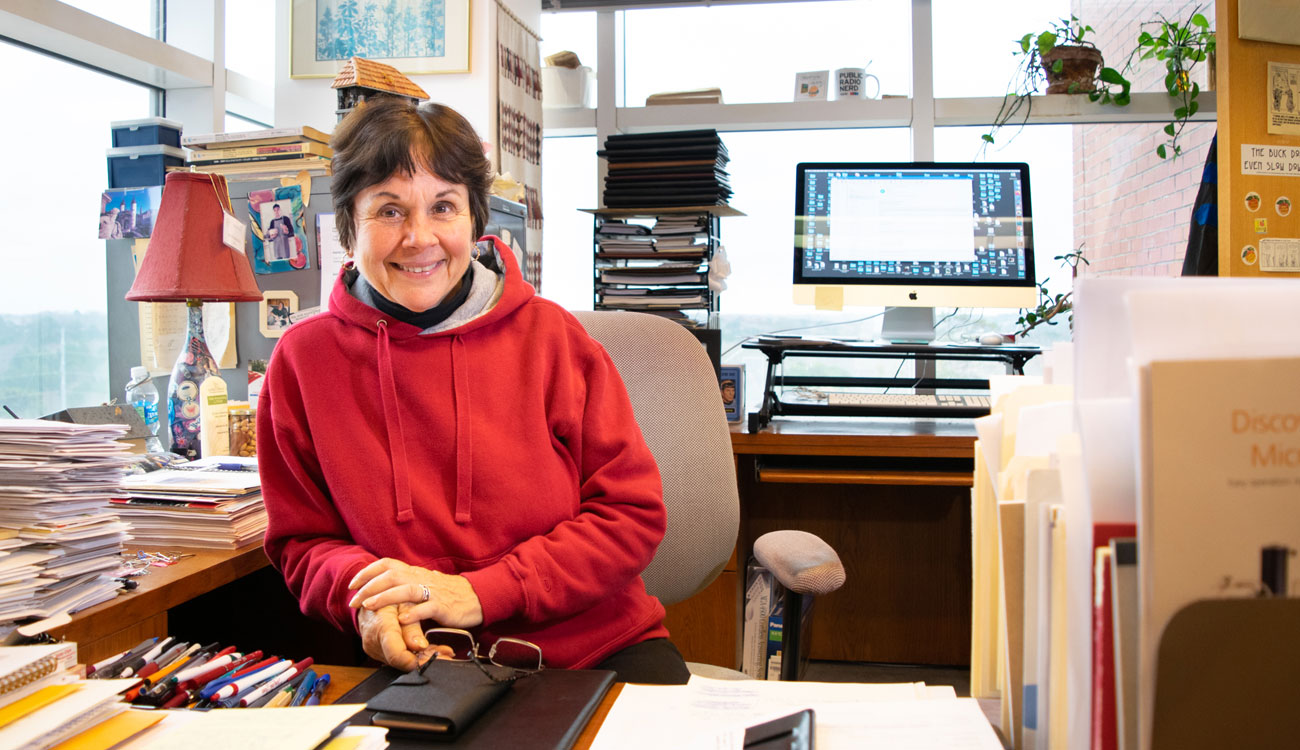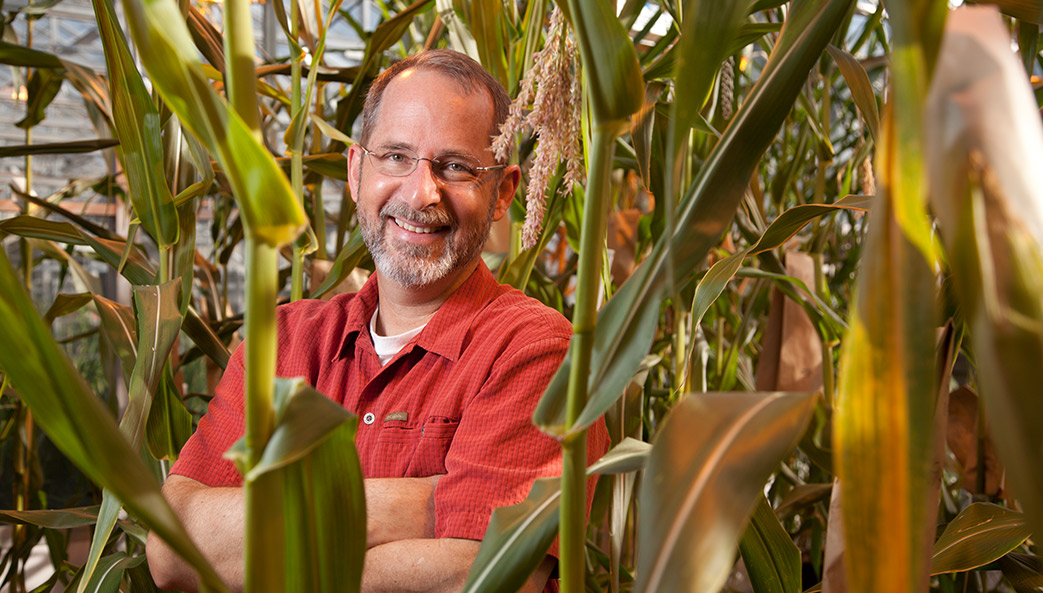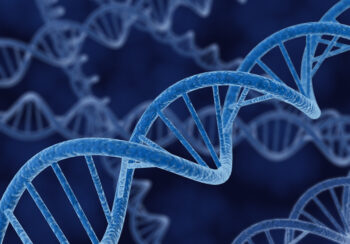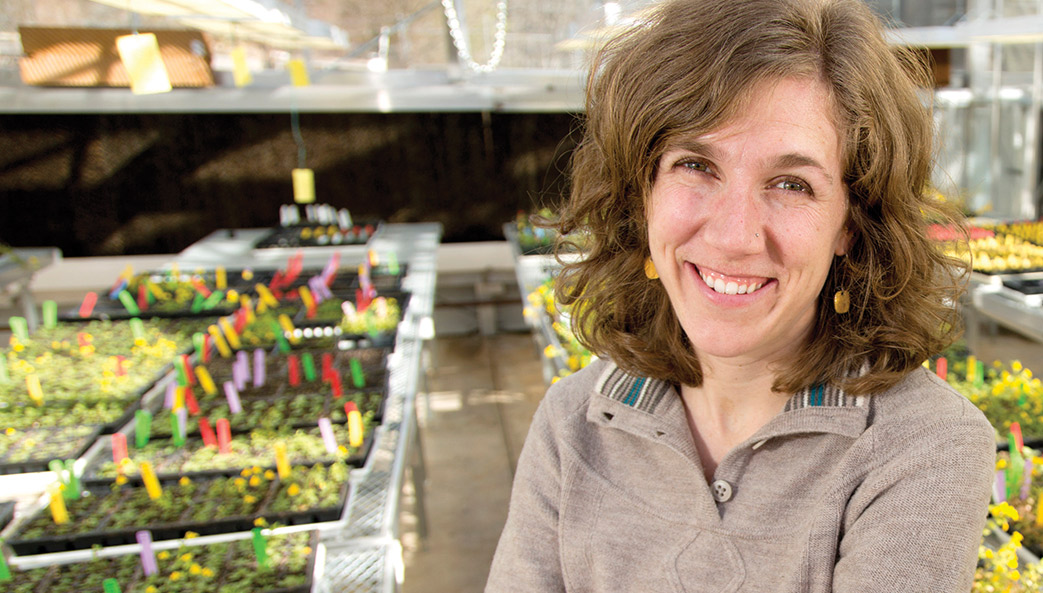At age 4, Janet Westpheling knew she would be a scientist someday. Her earliest memory is watching a children’s program, “Mr. Wizard,” that was popular in the 1950s and early 1960s.
“The show ‘Mr. Wizard’ was like ‘Mr. Rogers’ but about science,” said Westpheling, professor of genetics in UGA’s Franklin College of Arts and Sciences. “Mr. Wizard would perform experiments and make complicated scientific concepts easy for kids to understand, and I still remember them with crystal clarity.
“I was a bit obsessed with that show,” she said. “I didn’t just want to know how the grass grew—I wanted to know at the molecular level.”
Having a passion for science made her an “odd duck” in that era, as a young girl in the Deep South. “But I didn’t pay any attention to that,” she said. “My dad believed in me and my ability to be whatever I wanted to be, and that was enough. I pursued science in school over the objections of my teachers and even my mother, who was worried that if I went too far in school no one would marry me.”
After high school graduation, she attended Purdue University in West Lafayette, Indiana, where at the time women were a small minority of the undergraduate population, especially in the sciences. “That’s where I became accustomed to being the only woman in the room, which persisted throughout my early academic career. Much later I learned that, as the only woman in the room, I should speak up about that.”
She had anticipated a career in medicine growing up because of her naive view of the world. “When you grow up in a non-academic family, and you think of science, you think only of medicine.” But a summer job in a microbiology lab changed that. “I thought microbiology was really cool and just fell in love with it,” she said.
Westpheling completed a B.S. in microbiology in 1972, then a Ph.D. in genetics in 1980 at John Innes Institute in Norwich, England, before serving as a postdoctoral fellow at Harvard University. After a faculty appointment at the University of Pennsylvania School of Medicine, she was recruited to UGA in 1990.
For 15 years, she continued work she began as a graduate student and postdoc, studying the genetics of microbes that naturally produce antibiotics for use in humans.
“Genetics is a language that you develop with an organism,” she said. “But you must be able to ask the right question and be smart enough to understand the answer. If you make a mutation in an organism—inactivate a gene, for instance—the organism will tell you everything you want to know about that gene, if and why it’s important, what the gene does and what it doesn’t do.”
But when federal funding for natural product drug discovery lost priority with the National Institutes of Health, Westpheling adjusted and applied her genetics skills to solving other pressing problems. Since 2006, she has taken a leading role in the BioEnergy Science Center/Center for BioEnergy Innovation, a multi-institutional research effort supported by the U.S. Department of Energy.
“I still do genetics but apply it to other, less well-known and less well-characterized biological systems that do cool biochemistry,” she said. “I develop genetic methods for organisms that make biofuels, biomaterials such as bioplastic and chemicals. We take the native ability of non-model microbes, such as the ability to eat plant biomass, and engineer them to make fuels and chemicals from it.”
Westpheling and her colleagues have established new genetic pathways in microbes that could enable scientists to improve how these organisms break down tough fibers of inedible, wasteland plants and help produce environmentally friendly biofuels.
Before plant fibers can be fermented into the fuel additive ethanol, they undergo harsh, costly pretreatment, an expensive process that hampers efficient biofuel production. Westpheling and her colleagues aimed to fix this bottleneck by genetically engineering the bacterium Caldicellulosiruptor bescii, or C. bescii. This hyperthermophile grows optimally at 75 degrees Celsius (170 degrees Fahrenheit) and is sensitive to oxygen, so it has to be grown in chambers with gases like nitrogen without oxygen.
To compete in its harsh natural habitat, C. bescii evolved a remarkable capability to digest tough cell walls, including those of switchgrass, a perennial grass native to North America that is abundant, easy to grow and represents a sustainable source of carbon for conversion to fuels. It can also be grown on marginal lands and, unlike corn, does not compete with crop plants for space. “Switchgrass doesn’t need fertilizer, a lot of water, or tillable farmland, so it’s an ideal energy crop,” Westpheling said.
Westpheling and her team spent years developing methods that allow C. bescii to be genetically modified. In a 2014 study published in the Proceedings of the National Academies of Science, Westpheling and her team reported that their genetically engineered C. bescii was successful at breaking down switchgrass and converting it directly to ethanol, bypassing pretreatment altogether. That research is informing her work today on developing genetic tools to modify microbes for potential use in bioplastic production.
Despite her accomplishments, she hasn’t forgotten what it was like to be a curious 4-year-old asking questions about science. Among Westpheling’s proudest career achievements has been her work developing STEM education programs for fifth graders. She leads a nationally recognized, multi-state effort funded by DOE to improve science education in collaboration with the Creative Discovery Museum in Chattanooga, Tennessee.
Encouraging very young scientists to pursue their dreams is a reminder of her own early exposure to scientific experiments. “For instance, one of our programs is to go into schools and teach kids how to make ethanol molecules from pipe cleaners, introducing them to the complicated concepts of chemistry and physics by designing things that make them simple to understand,” she said. “In my own small way, I get to be Mr. Wizard and give back some of what others gave me.”






